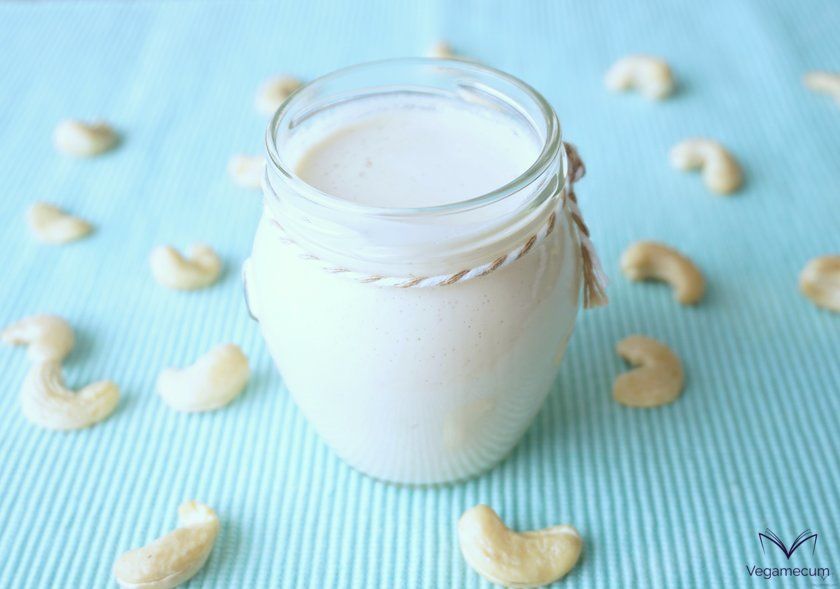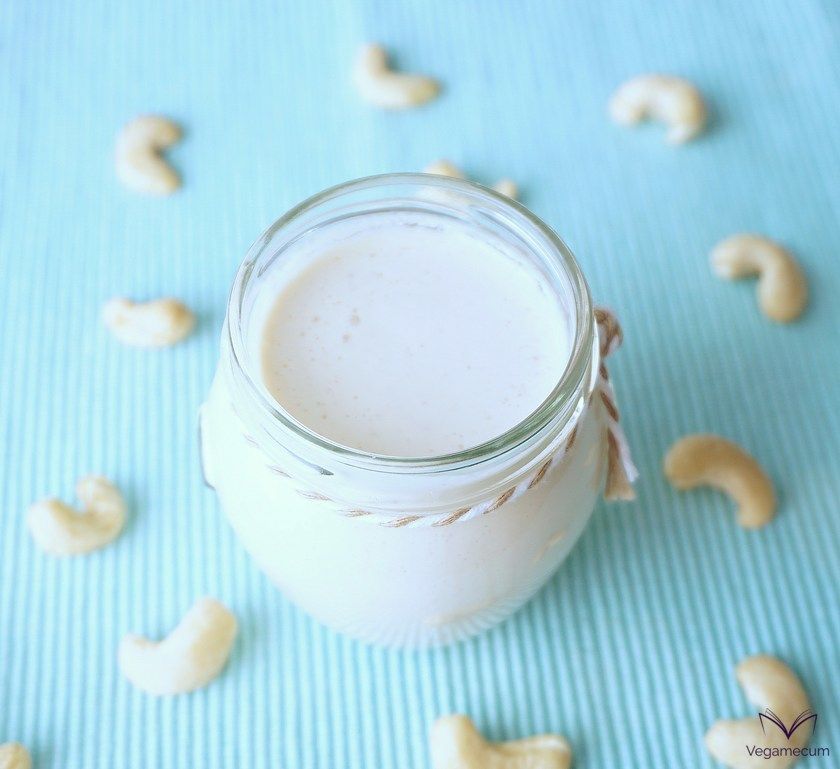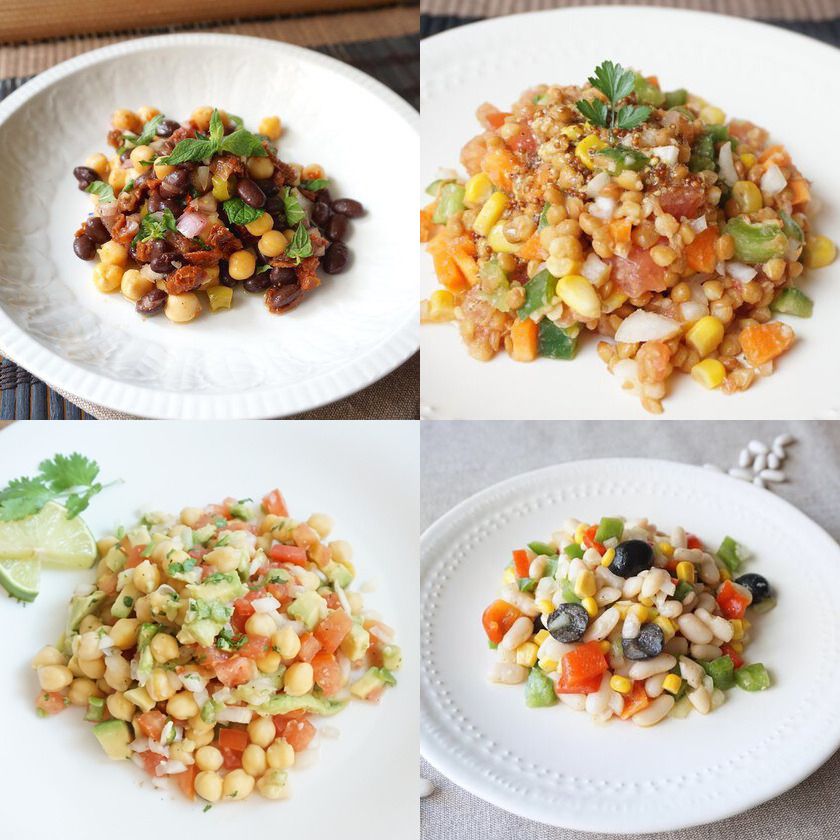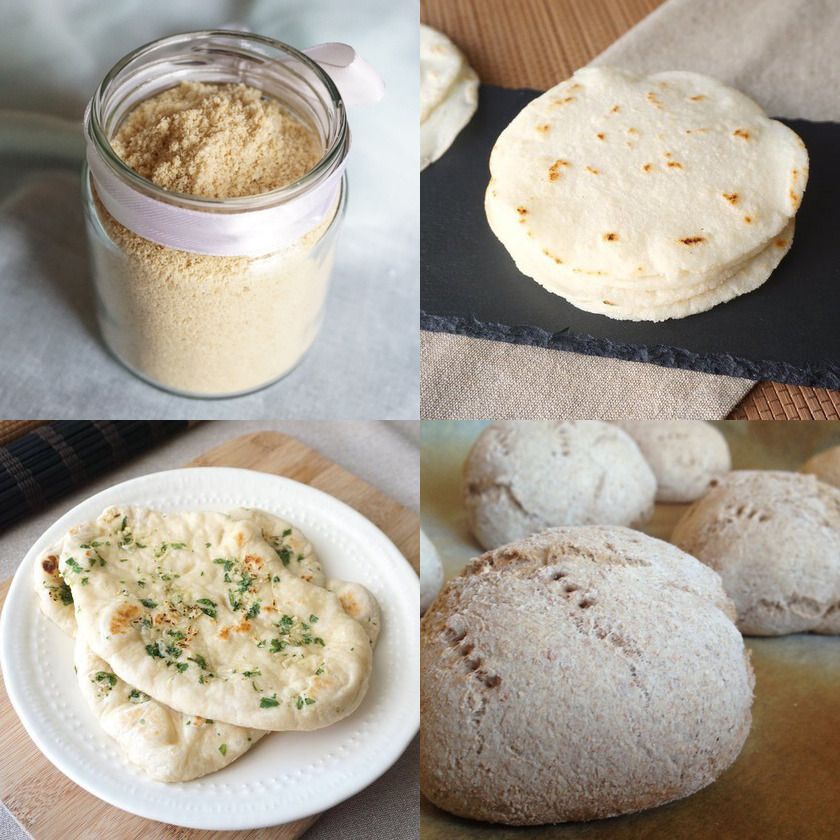
To prepare totally vegetable homemade yogurt is very, very easy, since it does not need more than 3 ingredients and very few and simple steps.
This yogurt recipe does not require a yogurt maker, and being made without milk of animal origin, it has a smoother and finer flavor. In addition, it is lighter and healthier, as it does not contain lactose, cholesterol, casein or trans fats.
So, this yogurt is ideal both to consume it as it is to add some sweetener, or as a base to prepare all kinds of yogurts, either adding chopped fruit such as mango or strawberries, jams, vanilla essence, or cocoa if desired; and even to make cheeses like ricotta vegan .
In addition, if once made, we reserve a few spoonfuls, this yogurt will help us to be able to do more and always have yogurt available.
In terms of texture and degree of acidity, we must bear in mind that, the more hours we let it rest, the more acidity and consistency yogurt will adopt, so it will depend on our tastes to let it stand for more or less time before introducing it into the refrigerator, where it will still curdle a little more.
Nutritionally, it is a yogurt rich in complete proteins , which provides essential fatty acids omega 3 and omega 6 , tryptophan , phytosterols , isoflavones , lecithin , fiber , vitamins E , K and group B ( B3 , B5 , B9 or acid Folic acid and, to a lesser extent, B1 , B2 and B6 ), calcium , copper , phosphorus , magnesium , manganese , potassium and selenium .
Below you can see what ingredients you need and the steps to follow in order to make a very creamy and versatile healthy yogurt, and at the end of the recipe you will find all the necessary notes to make it perfect for you .
| Difficulty level | Preparation time | Rations |
| Easy | 15 m. | For 1 liter |
* Plus 8 hours of soaking and resting
Ingredients
- 100 gr. raw cashews
- 1 l. soy milk
- 3 tablespoons unsweetened natural soya yogurt
Instructions
- We soak the cashews for 4 hours.
- Once the cashew nuts are hydrated, we wash them, drain them, put them in the blender glass next to 1/4 l. soy milk and beat until we are all well crushed and uniform.
- We pass the mixture to a pot, add the rest of the soy milk and stir well with a few rods. We light the fire and let it heat over low heat until it reaches 45º, stirring occasionally. We will notice that it is ready when, when we put some drops on the wrist, we notice it slightly warm, without getting to burn. We put out the fire and remove it.
- Add the yogurt to the mixture and stir well with the rods until all the ingredients are well integrated.
- We pass the yogurt to small clean and dry glass containers (or a large one of the same characteristics), cover them and place them between 4 and 8 hours in a warm area of the house or in the oven preheated to 45º and off, with the light on and without opening the door during the whole fermentation process. For the ferments to do their work, we must conserve the temperature very well, because if this is higher than 47º, the yogurt will be cut, and if it is lower than 43º, it will not come to curdle.
- Once it has the consistency that we want, we take it out of the oven, leave it at room temperature until it is tempered, and then we introduce it in the fridge until serving time, where it will still thicken a bit more.



Notes
- If you prefer, you can use almond milk or cashew instead of soy milk.
- When choosing yogurt to prepare the recipe, it is very important that it is natural, without sweeteners and, above all, that it contains selected active ferments such as bifidus and Lactobacillus acidophilus among its ingredients.
- To control the temperature well, the ideal is to use a kitchen thermometer, so we will make sure that we reach the ideal temperature. Anyway, if when checking the temperature you think that it is too high, you just have to wait until it is tempered a little before throwing the tablespoons of yogurt.
- If the minimum temperature of your oven is not less than 50º, you can turn off the oven and leave the light on before passing the yogurt to the jars so that in the meantime lower the temperature a little.
- In the event that the ambient temperature is cold, or that we want to have a greater control of the temperature, we can also keep the yogurt in a thermos so that it stays well and does not go down.
- The longer we allow the yogurt to ferment, the higher the density and the greater degree of acidity it will have.
If you have any questions, you can leave it to us in the comments. And if you dare and want to show your creations to the world, do not hesitate to label us, we will love to see them through the networks!
Do you join us on social networks? You will find us on Facebook, Twitter, Instagram and Pinterest!















